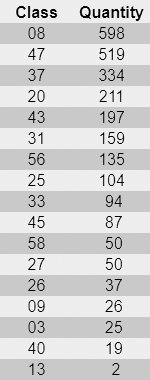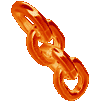By Canadian standards Great Britain is small geographically but has a population greater than 66 million. You can board a passenger train in Inverness, Scotland, and be in London, England, in ten hours. Try that in Canada. Board VIA Rail's "Canadian" in Vancouver on the west coast, head east for ten hours, and you will still be in the province of British Columbia with seven more provinces to go. It may be difficult for those from Britain to picture the size of this country, but if you put yourself on a Russian train staring out a window at endlessly empty land, slurping borsch for far too many days, you'll get the idea. Canada's greatest gift to rail travel was the addition of showers on VIA's "Canadian". Canadians have mostly abandoned their trains for planes and cars. They don't comprehend how British passenger trains are as ubiquitous as our public buses. While British locals may complain about their trains lateness, to Canadians five or ten minutes late sure beats hours, or even days behind schedule. (VIA's Canadian may hold the record at 48 hours late.)
There are several basic types of locomotives in Great Britain, diesel-mechanical, diesel-hydraulic, diesel-electric, pure electrics, and dual mode units which are electric traction motors powered by a diesel engine and generator or external electric power. This website attempts to show only a few of the many British locomotives.
British locomotives may be described in two ways. Using a letter combination to indicate driving axles such as B-B, or Bo-Bo, which would be two traction motors on each truck or bogie totaling four motors. (A North American example would be the General Motors model GP-9) The A1A-A1A configuration would consist of a three axle truck with the two outer axles powered by traction motors (The North American example is the General Motors model E-8). Three axle powered trucks would be noted as either C-C or Co-Co, i.e. the EMD built SD40 or SD40-2. More examples may be found here.
may be found here.

Just to make things more interesting there are smaller diesels (shunters) that have their driving wheels coupled with rods like a steam engine. These are described by using the Whyte Classification system, just the same as a steam engine. Example, a British diesel 0-6-0 has three driving wheels per side with one connecting rod on each side.
The second method to identify Btitish locomotives is by their two-digit Class number. This would be similar to the North American manufacturer's model designation, however, in Britain there can be multiple manufacturers for the same class.
Some North American diesel model designations are very well known, such as the GP9, SD40-2, AC4400CW, etc. Why is this so? Because the greater the quantity of a model that's produced, the more likely you will have seen it and be familiar with its designation. Countless numbers of the previous noted examples were produced over the years and operated by many North American railways.
But what about British locos? What are the most common models? Using the above theory, if there are more locomotives produced in a particular class, then there should be more chances you would be familiar with its class number. If you are like me, and know very little about British locos, where do you start? Here's a list of British classes sorted by the quantity produced, largest quantites at the top. You should note this data was taken from 1984 records so does not represent the current roster of British locomotives. As a snapshot in time, however, it does show the proportion of one class to another. With the addition of newer high-powered locomotives over the past few years the balance may have changed somewhat.










